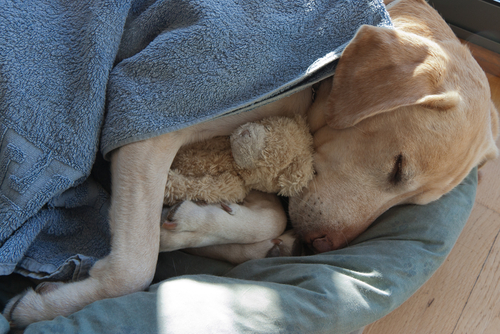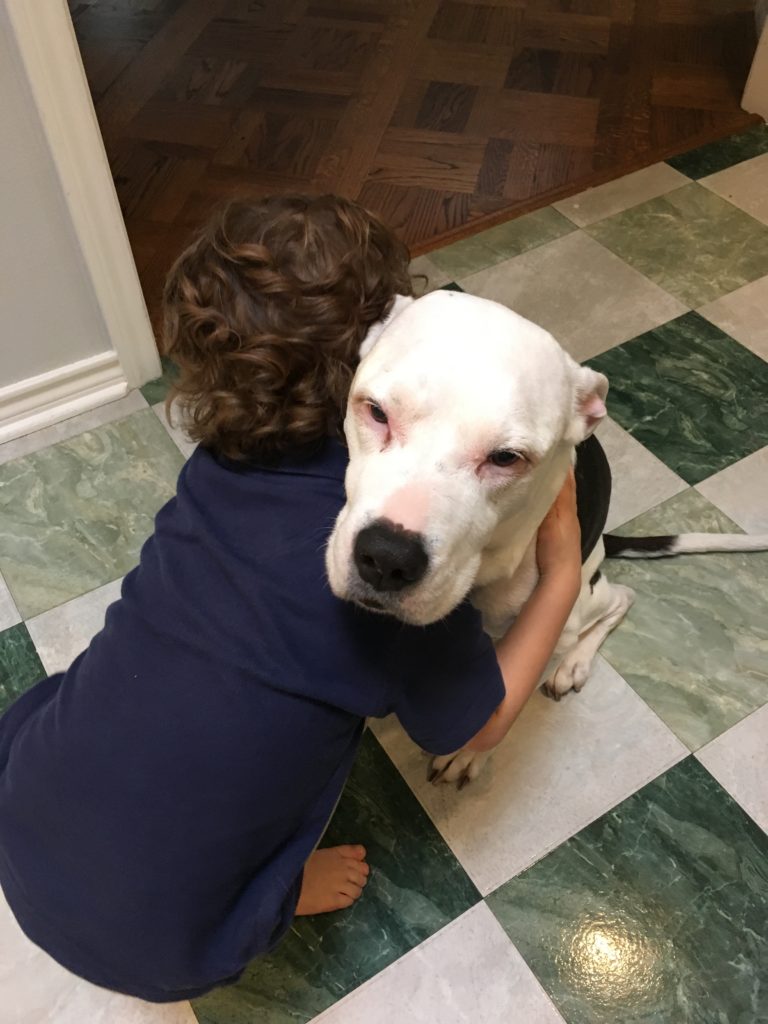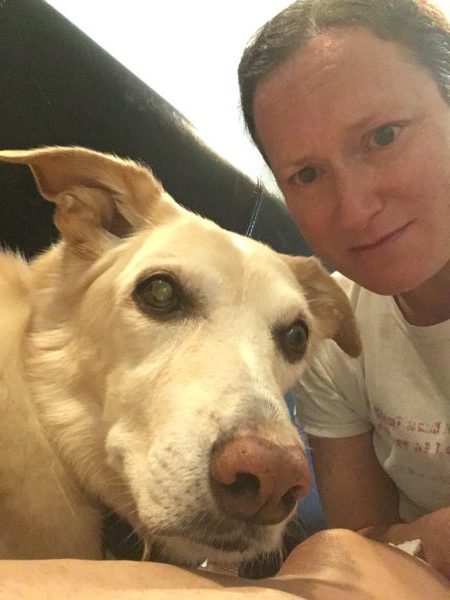The end is never easy. The thought of losing your friend is painful beyond description. Being faced with the decision of having to euthanized your dog is devastatingly difficult.
During a time like this, anything that can be done to make it more bearable, more comfortable, and more peaceful – not just for you, but also your pup – is worth consideration. When the time comes for you to gently ease your best friend from this life, consider having it done in the comfort of your own home. A peaceful place. This option may improve the experience for every family member involved.

The Standard Procedure
Most pup parents set up an appointment to have the procedure performed at a veterinarian’s office. Vets will often schedule these appointments during quiet times in the clinic for the benefit of the bereaved.
Once there, the dog will be given a series of medications that first allow the dog to become unconscious and then to pass on. This is done in a private room with as much consideration and comfort that can be afforded in a vet office.
One of the drawbacks with this scenario is transporting a sick or dying dog to the vet’s office. If the car induces stress, anxiety, or fear in your dog, that is hardly the state of mind you want to bring about during their last moments on this earth. Further, your dog may be in pain at the end of life, despite pain management strategies. Loading him into a car and driving may worsen his discomfort.
Many dogs also have fear of the vet office itself. If your dog becomes nervous, agitated, stressed, or uncomfortable on routine vet visits, there is no reason why she won’t feel that way on this final trip to the vet. If you could eliminate sources of stress and discomfort and help ensure a calm, peaceful state of mind in your dog’s last moments, wouldn’t you want to give her that gift?

Benefits of Being Home
No one wants to face their own mortality, but if given the choice where would you rather be when your time comes: At home curled up in your favorite spot or in a cold, sterile place that frightens you? There is no other place on this earth where your dog feels more comfortable than at home. In this safe environment, your dog can feel calm and in a relaxed state throughout the entire process.
The other tremendously beneficial aspect of having this experience at home is that you and your family can also feel more at ease and relaxed. This event is going to be filled with very heavy emotions. Lighten the load by having the freedom to express them in privacy.

Considerations for Children
Children often surprise adults in their capacity to handle life’s largest challenges, including loss. This is especially true if they have been given the opportunity to discuss and understand what to expect. Of course, the decision rests with the parents as to whether an individual child is ready to witness and be present during the procedure. If they are ready, including them in this very sad, but also sacred event not only honors and respects the relationship they have with your dog, but also helps foster a healthy perspective on the circle of life.
Being able to say goodbye and be by their best friend’s side as he quietly leaves this world is an experience that will have a lasting, positive impact. Experiencing it at home will also allow children greater security and comfort with the emotions they’ll encounter.
If you need a little support starting the conversation with your children, there are many wonderful children’s books on preparing for and grieving the loss of a pet. Again, this is a consideration that every parent will have to make on their own. Just like every sweet pup, every child is different too.

Hospice Care
As your dog approaches the end of life, your vet will help you manage pain and symptoms at home with medication. As you’re no longer seeking to cure or extend life, this is considered palliative or hospice care. The goal is to keep your pet free from pain and discomfort, improving the quality of your dog’s remaining life.

What to Expect, an Expert’s Process
We consulted with Dr. Melissa Pearson, a veterinarian in the Dallas, TX area who runs Peaceful Pathways for Pets. Here we will share her process so that you can see what to expect. It’s worth noting that I have personally employed her services on two heartbreaking occasions and will choose the at-home path again when I must.
- Dr. Pearson evaluates each case with a telephone consultation.
- The pet’s aftercare (private cremation vs burial vs general cremation) will be discussed prior to the procedure or during the telephone consultation.
- A convenient time to visit your home for the euthanasia procedure will be scheduled.
- All services are performed with the assistance of a highly skilled veterinary technician.
- Upon arrival at your home, Dr. Pearson will explain the euthanasia procedure to you and any other family members who wish to be present.
- Tranquilizer/pain medication combination will be given subcutaneously (under the skin). This combination generally will take 5-15 minutes to achieve maximum effect.
- The doctor will clip hair on a leg to ensure visualization of a vein.
- Injection of euthanasia solution (an anesthetic mix) in the vein. Once given, your pet will become unconscious, their eyes will not shut, breathing will stop, and their heart will stop.
- For confirmation of death, Dr. Pearson will listen to your pet’s chest, check pulses and blink reflexes.
- Dr. Pearson will advise of any potential post mortem movement. Urine and feces may be expelled as muscles relax.

What Happens Next: Aftercare
Burial and cremation are your main choices for aftercare. If you have chosen burial on your property and there are no local ordinances preventing it, the vet will leave the body with you for that purpose. Alternatively, you may have made arrangements with your local pet cemetery.
If you have chosen to have your dog cremated, the mobile vet will remove the body from your home and take it to the crematorium. The body may be wrapped in a blanket and placed on a stretcher to securely carry it to the vet’s vehicle.
Cremation can be performed individually with the remains being returned to you. If you want to save the remains in an urn or spread them at a place that was special for you and your dog, this will be the best choice for you. Another option is a communal cremation. Your dog will be cremated together along with other pets. Their ashes will be spread jointly over a pet cemetery or other such dedicated space.
You may want to consider memorializing your pet with a tangible object that you can see or touch every day. There are many meaningful pieces that you can display, wear, or gift to memorialize the loss of your loved one.

Grief and Pet Loss
We all expect to be saddened by the loss of a friend, but many of us are not prepared for just how hard pet loss can hit us. There is a sort of cultural stigmatism about “overreacting” to the loss of a pet. We are expected to have one good cry and then buck up and get back to work. People have been fired from their jobs for taking a single day off to grieve the loss of a dog.
All of this, despite the fact that we love them every bit as much as we do human family members. We grieve just as intensely as we would for a human counterpart. It’s absolutely normal and okay to do so. Give yourself time, surround yourself with likeminded dog lovers who will support you, and let yourself go through the grieving process.
Although you will be suffering from a heart that is breaking, there is also an abundance of beauty to be found in these last moments together. Over time, you will be able to revisit the memories of the lifetime you shared with smiles instead of tears. Dogs are so often our happiest hello and our hardest goodbye.
 Toledo, United States.
Toledo, United States.